Takuya Isomura
On Predictive planning and counterfactual learning in active inference
Mar 19, 2024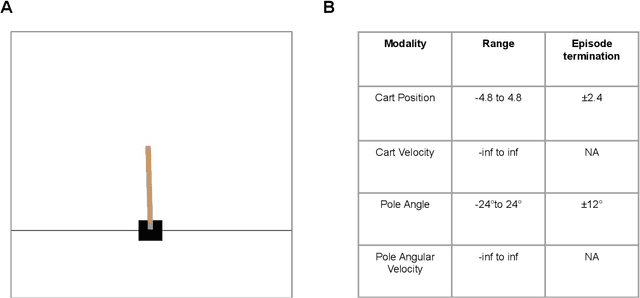
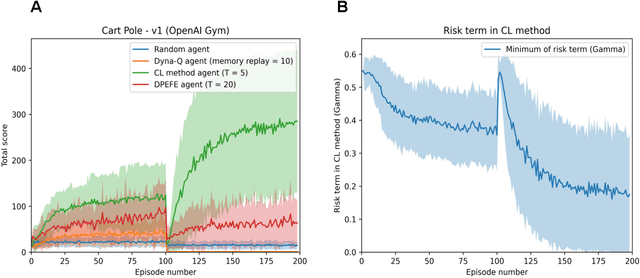
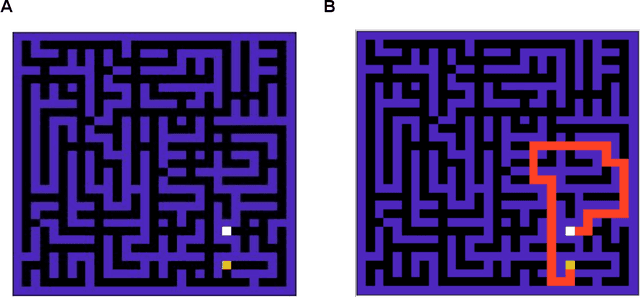
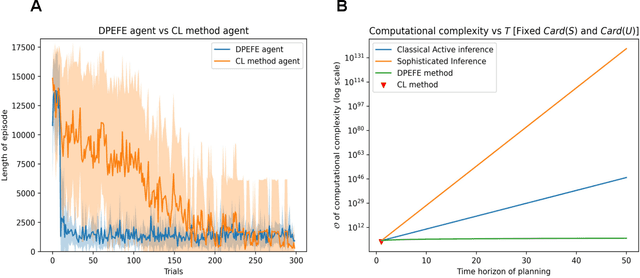
Abstract:Given the rapid advancement of artificial intelligence, understanding the foundations of intelligent behaviour is increasingly important. Active inference, regarded as a general theory of behaviour, offers a principled approach to probing the basis of sophistication in planning and decision-making. In this paper, we examine two decision-making schemes in active inference based on 'planning' and 'learning from experience'. Furthermore, we also introduce a mixed model that navigates the data-complexity trade-off between these strategies, leveraging the strengths of both to facilitate balanced decision-making. We evaluate our proposed model in a challenging grid-world scenario that requires adaptability from the agent. Additionally, our model provides the opportunity to analyze the evolution of various parameters, offering valuable insights and contributing to an explainable framework for intelligent decision-making.
Active Inference and Intentional Behaviour
Dec 16, 2023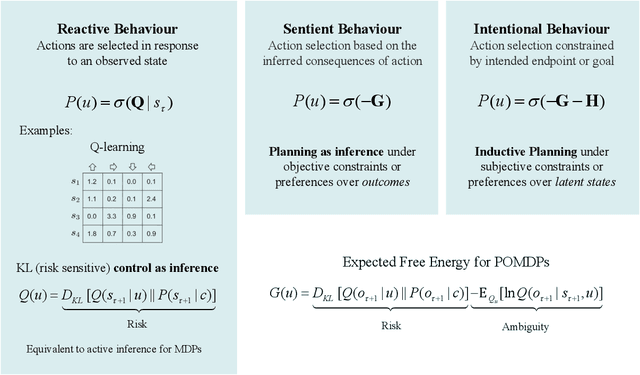
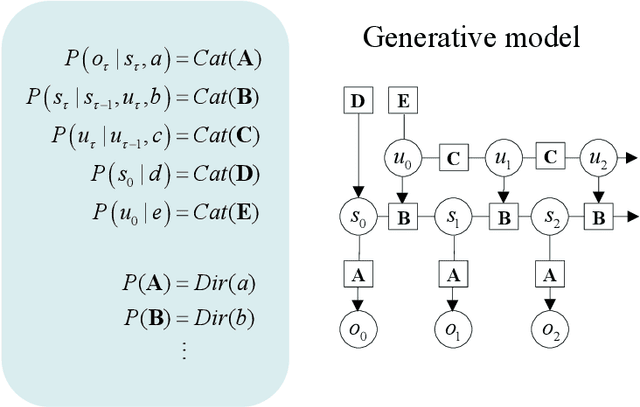

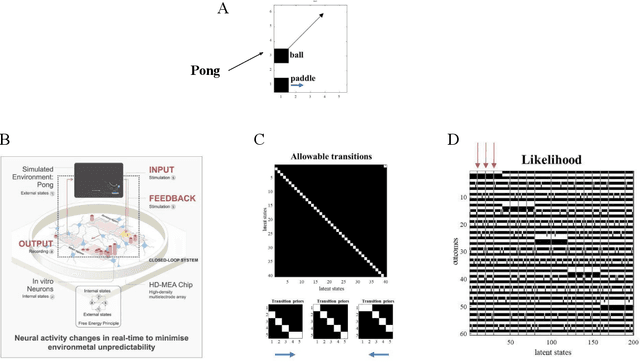
Abstract:Recent advances in theoretical biology suggest that basal cognition and sentient behaviour are emergent properties of in vitro cell cultures and neuronal networks, respectively. Such neuronal networks spontaneously learn structured behaviours in the absence of reward or reinforcement. In this paper, we characterise this kind of self-organisation through the lens of the free energy principle, i.e., as self-evidencing. We do this by first discussing the definitions of reactive and sentient behaviour in the setting of active inference, which describes the behaviour of agents that model the consequences of their actions. We then introduce a formal account of intentional behaviour, that describes agents as driven by a preferred endpoint or goal in latent state-spaces. We then investigate these forms of (reactive, sentient, and intentional) behaviour using simulations. First, we simulate the aforementioned in vitro experiments, in which neuronal cultures spontaneously learn to play Pong, by implementing nested, free energy minimising processes. The simulations are then used to deconstruct the ensuing predictive behaviour, leading to the distinction between merely reactive, sentient, and intentional behaviour, with the latter formalised in terms of inductive planning. This distinction is further studied using simple machine learning benchmarks (navigation in a grid world and the Tower of Hanoi problem), that show how quickly and efficiently adaptive behaviour emerges under an inductive form of active inference.
Quadratic speedup of global search using a biased crossover of two good solutions
Nov 19, 2021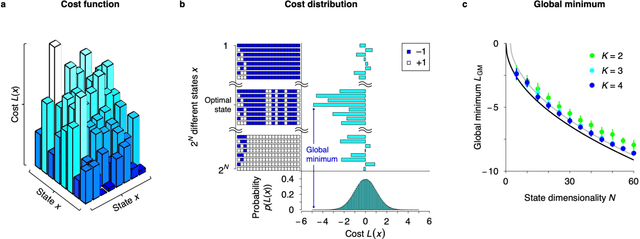
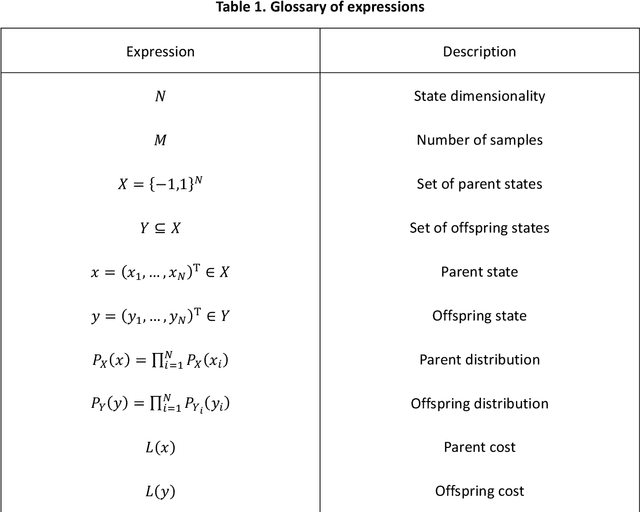

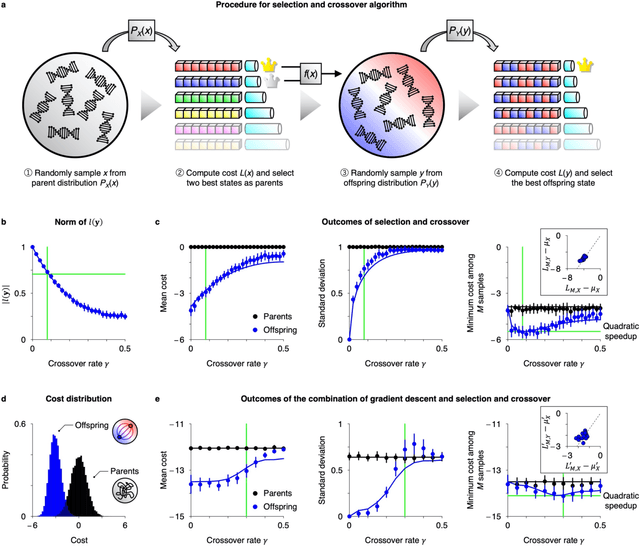
Abstract:The minimisation of cost functions is crucial in various optimisation fields. However, identifying their global minimum remains challenging owing to the huge computational cost incurred. This work analytically expresses the computational cost to identify an approximate global minimum for a class of cost functions defined under a high-dimensional discrete state space. Then, we derive an optimal global search scheme that minimises the computational cost. Mathematical analyses demonstrate that a combination of the gradient descent algorithm and the selection and crossover algorithm--with a biased crossover weight--maximises the search efficiency. Remarkably, its computational cost is of the square root order in contrast to that of the conventional gradient descent algorithms, indicating a quadratic speedup of global search. We corroborate this proposition using numerical analyses of the travelling salesman problem. The simple computational architecture and minimal computational cost of the proposed scheme are highly desirable for biological organisms and neuromorphic hardware.
Dimensionality reduction to maximize prediction generalization capability
Mar 01, 2020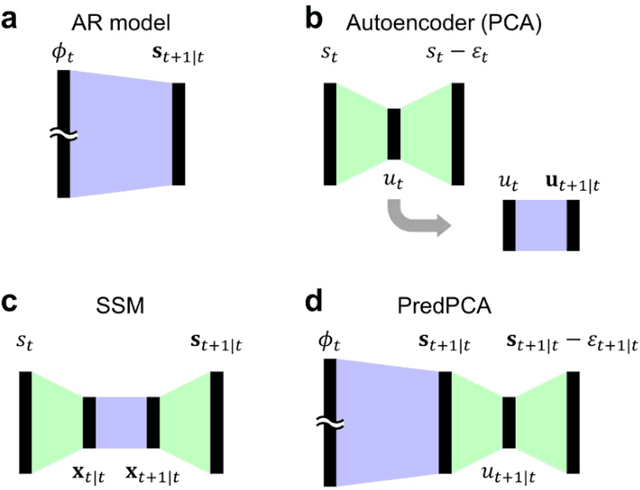
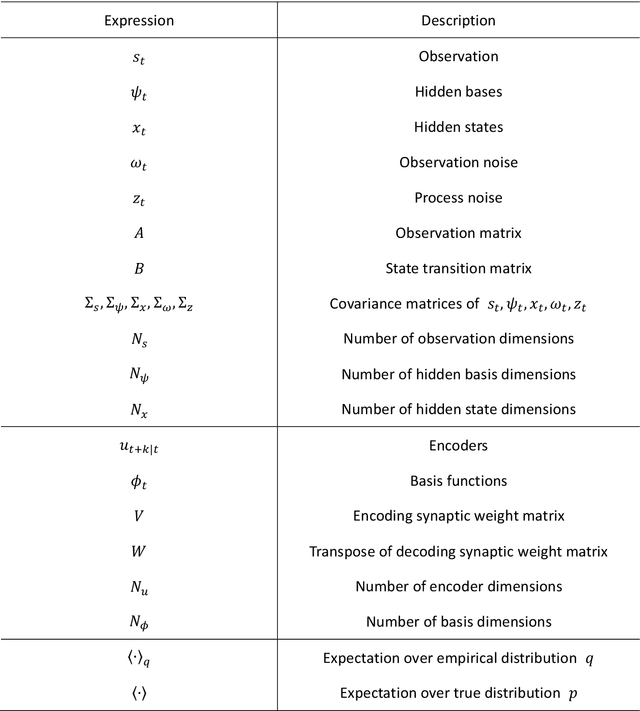
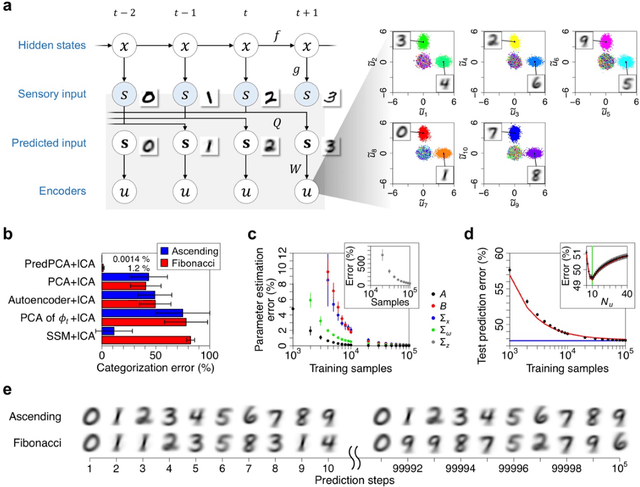
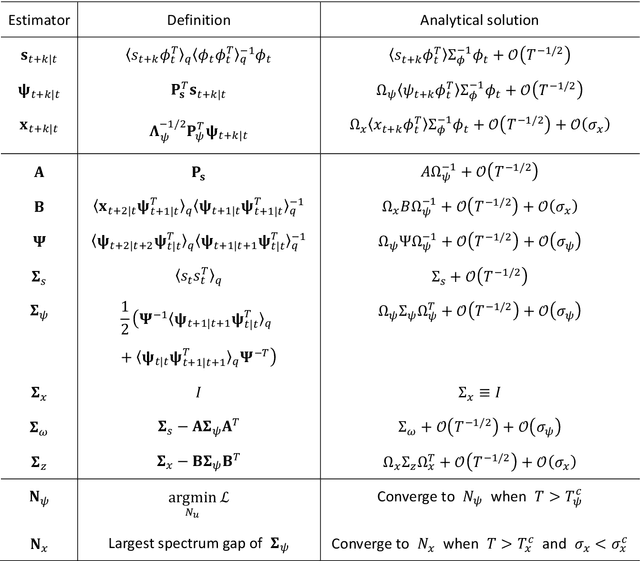
Abstract:This work develops an analytically solvable unsupervised learning scheme that extracts the most informative components for predicting future inputs, termed predictive principal component analysis (PredPCA). Our scheme can effectively remove unpredictable observation noise and globally minimize the test prediction error. Mathematical analyses demonstrate that, with sufficiently high-dimensional observations that are generated by a linear or nonlinear system, PredPCA can identify the optimal hidden state representation, true system parameters, and true hidden state dimensionality, with a global convergence guarantee. We demonstrate the performance of PredPCA by using sequential visual inputs comprising hand-digits, rotating 3D objects, and natural scenes. It reliably and accurately estimates distinct hidden states and predicts future outcomes of previously unseen test input data, even in the presence of considerable observation noise. The simple model structure and low computational cost of PredPCA make it highly desirable as a learning scheme for biological neural networks and neuromorphic chips.
On the achievability of blind source separation for high-dimensional nonlinear source mixtures
Aug 02, 2018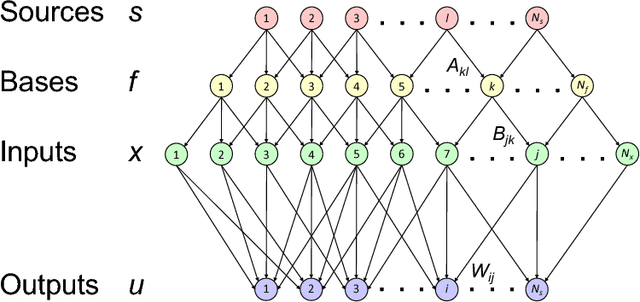
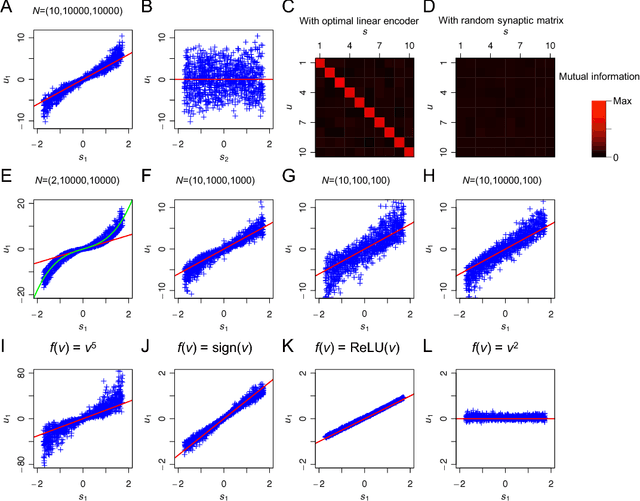
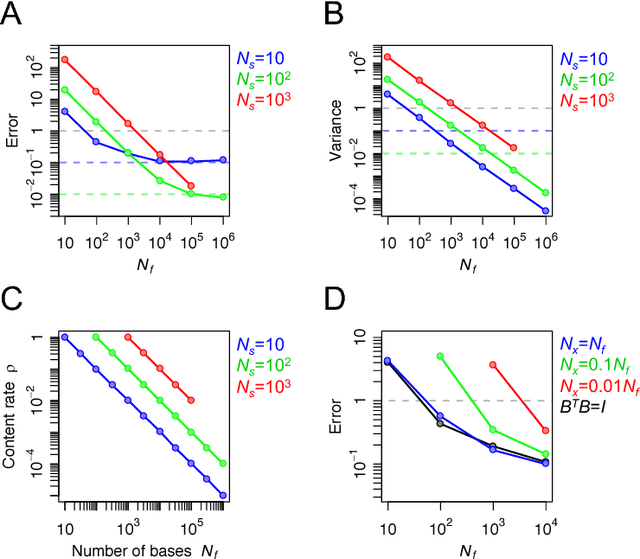

Abstract:For many years, a combination of principal component analysis (PCA) and independent component analysis (ICA) has been used as a blind source separation (BSS) technique to separate hidden sources of natural data. However, it is unclear why these linear methods work well because most real-world data involve nonlinear mixtures of sources. We show that a cascade of PCA and ICA can solve this nonlinear BSS problem accurately as the variety of input signals increases. Specifically, we present two theorems that guarantee asymptotically zero-error BSS when sources are mixed by a feedforward network with two processing layers. Our first theorem analytically quantifies the performance of an optimal linear encoder that reconstructs independent sources. Zero-error is asymptotically reached when the number of sources is large and the numbers of inputs and nonlinear bases are large relative to the number of sources. The next question involves finding an optimal linear encoder without observing the underlying sources. Our second theorem guarantees that PCA can reliably extract all the subspace represented by the optimal linear encoder, so that a subsequent application of ICA can separate all sources. Thereby, for almost all nonlinear generative processes with sufficient variety, the cascade of PCA and ICA performs asymptotically zero-error BSS in an unsupervised manner. We analytically and numerically validate the theorems. These results highlight the utility of linear BSS techniques for accurately recovering nonlinearly mixed sources when observations are sufficiently diverse. We also discuss a possible biological BSS implementation.
 Add to Chrome
Add to Chrome Add to Firefox
Add to Firefox Add to Edge
Add to Edge